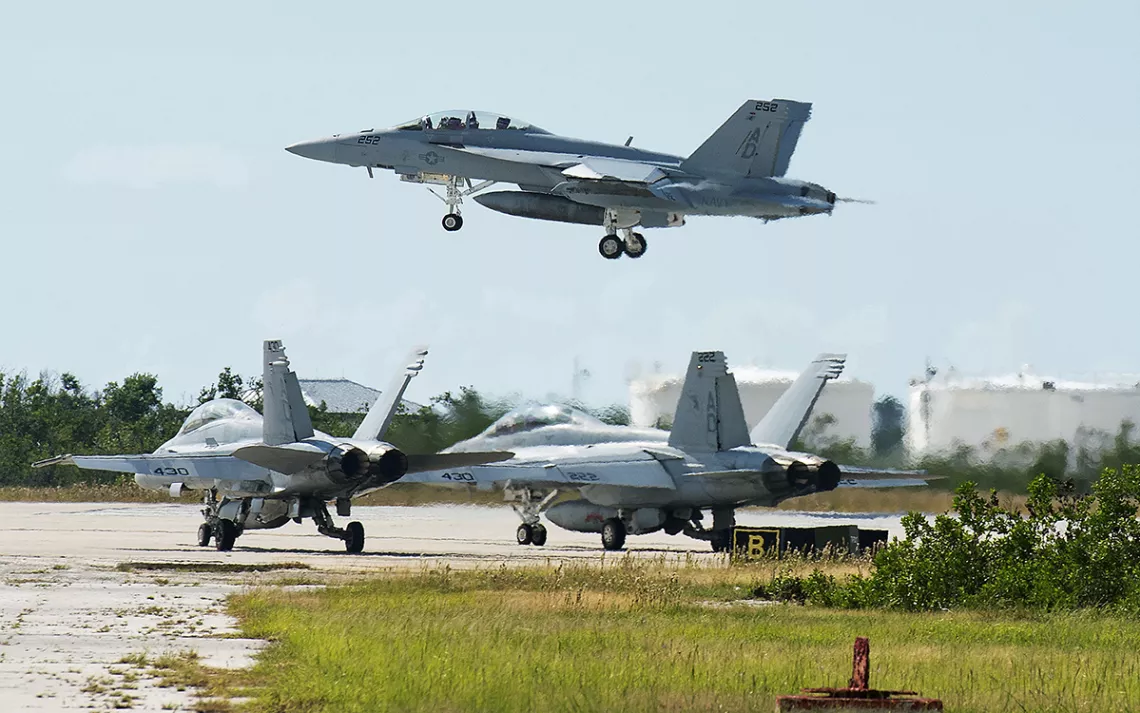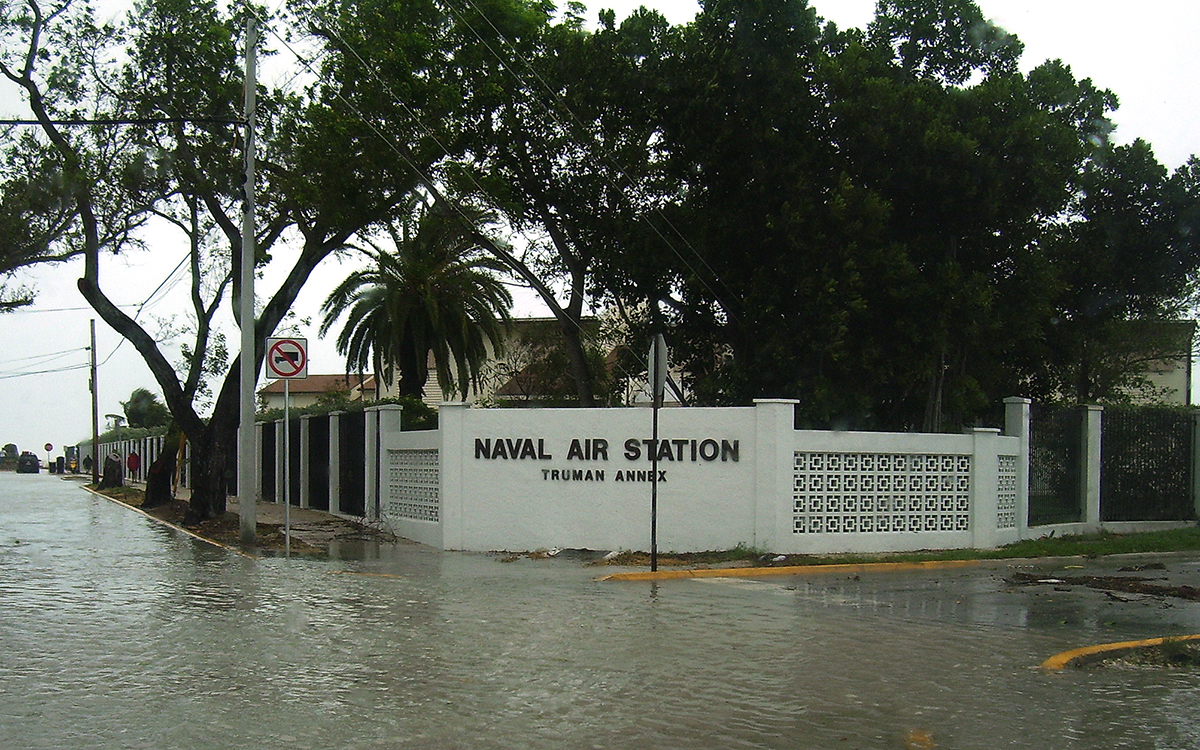War Is Hell—So Is Climate Change
The US military readies for battle in a harsh new theater

Super Hornets at Naval Air Station Key West, Florida, where they were evacuated from Georgia prior to the landfall of Hurricane Florence in September 2018. NAS Key West itself is considered vulnerable to extreme weather events. | Photo by Bob O'Neal/Associated Press
In All Hell Breaking Loose: The Pentagon’s Perspective on Climate Change (Metropolitan Books, 2019), Michael T. Klare gives us a wide-angle view of the impact of climate change on our interconnected world: Storms, floods, extreme heat, and droughts hurl whole regions into chaos. Food shortages, energy crises, pandemics, and mass migrations set off global shock waves, which wash the ground out from under fragile states and unravel international trade.
The US military may be called to respond to such crises, while its own bases may not escape them. “The military’s worst nightmare,” Klare says, is “a future in which the armed forces are called upon to overcome multiple emergencies around the globe while many of their bases are out of commission and large numbers of their troops are engaged in domestic relief operations, leaving them ill-equipped to address any major threats at all.”
The military takes climate change deadly seriously. Klare traces its “altered perspective” to a 2007 study by a Pentagon-funded think tank that presented climate change as a threat multiplier, increasing the “likelihood of internal unrest and state collapse.” Other reports followed in the Obama years, when the commander in chief himself mandated awareness of climate change throughout the executive branch.
All Hell Breaking Loose is primarily a summary of these and later reports. Klare doesn’t take us far behind the scenes, nor does he get into the military’s entanglements with corporate America, which supplies its planes, ships, missiles, and—through subcontractors—human labor. But his long experience in chronicling global conflict over natural resources gives him special insight, as in his account of the potential for war in the Arctic. As temperatures rise, melting ice there opens up a repository of oil, gas, and minerals. Two of the nations bordering the Arctic are among the most powerful on Earth: the United States and Russia. China has an interest in potential Arctic sea lanes for trade with Europe. Other nations would like a share of the economic wealth created as a new ocean appears.

The United Street entrance to the Naval Air Station Key West Truman Annex during Hurricane Ike. | Photo courtesy of US Navy/Cmdr. Michael Kutyba
Describing 2016 military maneuvers pitting NATO soldiers against an “aggressor” force in the mountains of Norway, Klare says the hypothetical aggressor was “unmistakably Russian.” The Arctic could be the first region where “climate change plays a direct role in provoking conflict among the major powers.”
The possibility of Arctic conflict is very much on military minds. In a recent article in Military Review, the authors (one an officer from the Singapore Armed Forces, the other from the US Army) argue for the governance of the Arctic as a global common. Further, they say, such governance should favor “environmental sustainability and climate change prevention” over economic gains. Even under Trump, the US military continues to plan for the impacts of climate change.
There is an irony here: The US military itself is a major contributor to climate change. According to a recent study by British social scientists, the military emits more carbon-dioxide-equivalent than most countries. A 2019 report from the United States Army War College says, frankly, “The army is not an environmentally friendly organization. . . . [T]he turbine engines that power helicopters and tanks burn thousands of pounds of JP-8 fuel per hour. Every time one of those turbine engines is shut off, almost a pint of jet fuel is dumped overboard onto the ground. The munitions used in training rain lead and explosive residue into range complexes across the country. Armored vehicles churn up the soil in maneuver areas and contribute to erosion and sediment runoff into streams.” The report’s authors (an array of military officers and academicians) conclude, “In short, the army is an environmental disaster.”
Given public concern about the environment, they urge the Department of Defense to create “a culture of environmental stewardship across the force.” If the army continues to ignore threats from climate change and other environmental concerns, they suggest, it may alienate “youth, allies, and voters on whose largesse it depends, hurtling through the night in the belief that it is as unsinkable as the Titanic.”
This acknowledgment of the power of public pressure is encouraging, but there is a presence in the room that we who can apply that pressure need to acknowledge: the specter of war. Whatever the Pentagon does to rein in military carbon emissions, there is this harsh fact: War is itself capable of massive environmental destruction—even, in the event of nuclear war, of life on Earth.
In Confessions of a Recovering Environmentalist and Other Essays, English writer Paul Kingsnorth, in another context, cautions environmentalists against being “caught in a narrative of other people’s making.” When the US goes to war in “the national interest,” we need to ask ourselves what narrative defines that interest? What stories do national leaders tell themselves to justify the wars the US military fights? What stories do we tell ourselves to ease acceptance of the destructive human systems in which we live?
These are questions beyond the scope of All Hell Breaking Loose and the military reports, but they lurk behind every page.
 The Magazine of The Sierra Club
The Magazine of The Sierra Club



